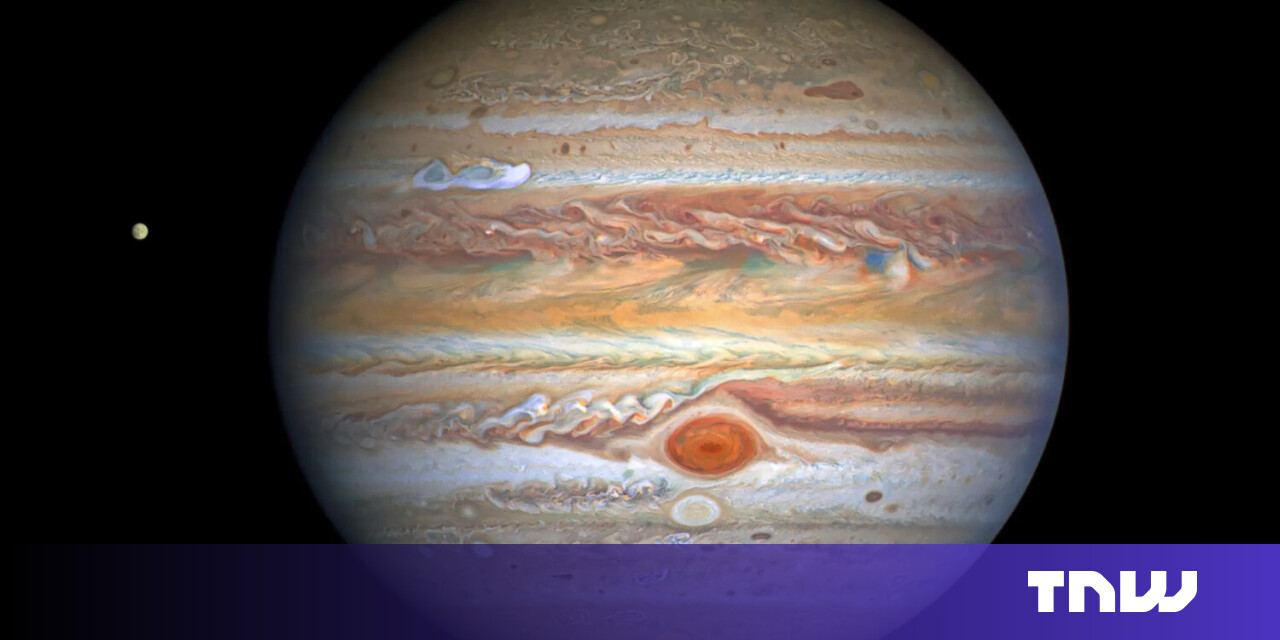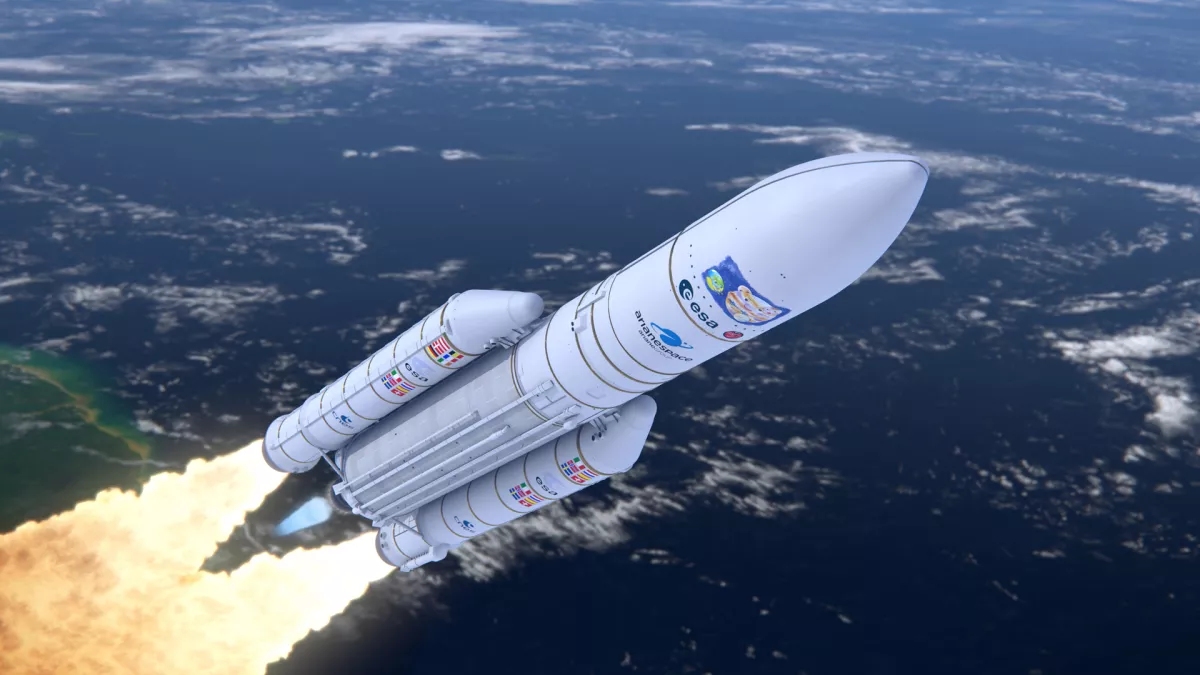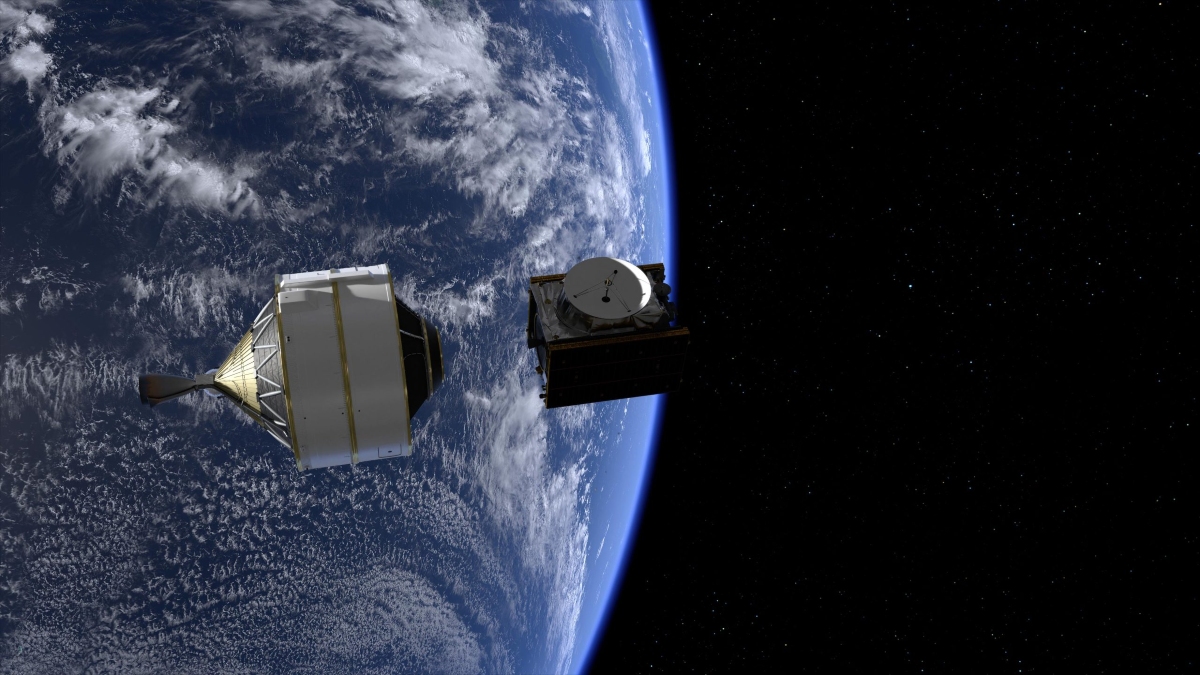
The European Space Agency’s (ESA) Jupiter Icy Moons Explorer mission — ‘Juice’ — is ready to embark on its journey to the solar system’s largest planet.
Juice is scheduled to launch today, April 14, at 14:14 CEST (13:15 BST) from Europe’s spaceport in Kourou, French Guiana.
The launch was supposed to take place yesterday but was postponed due to poor weather conditions.
Juice will make the 8-year, 6.6 billion km trip to study three of Jupiter’s moons: Ganymede, Callisto, and Europa. Each of these worlds has an ocean of water hidden underneath an icy shell — an important target for astronomers searching for life beyond Earth.
Join us at TNW Conference June 15 & 16 in Amsterdam
Get 20% off your ticket now! Limited time offer.
ESA will stream the launch live on its website and on its YouTube channel which you can view below. French viewers can access ESA’s Web TV Two.
The satellite will blast off atop Europe’s Ariane 5 rocket. Due to the intricacies of the trajectory that will take Juice to Jupiter, the rocket has to lift off during a one-second window. Fortunately, additional one-second launch windows will be available every day until the end of April, should today’s launch be unsuccessful.

If all goes to plan, Juice will separate from the upper stage of Ariane 5 at 14.42 CEST, before sending its first signal down to the Earth’s surface by 14:51 CEST. The space agency expects solar arrays to be completely deployed by 15:55 CEST.
0️⃣ Good morning on #ESAJuice launch day!
How to follow????https://t.co/WoeO7VSwWQ
Key moments (time=cest):
???? 13:45 Live launch programme starts at esawebtv
???? 14:15 Launch
???? 14:51 Aquistion signal (earliest)
????️15:55 Solar array deployment ( time may vary)Questions? #AskESA! pic.twitter.com/oaV77pV5iz
— ESA’s Juice mission (@ESA_JUICE) April 13, 2023
Juice is equipped with two monitoring cameras that will capture parts of the solar array deployment following launch, and a few days later the deployment of the 16 m-long radar antenna. If suitable images are acquired, they will be made available for publication at the earliest possibility, said ESA.
In the two weeks after launch, the satellite will deploy all of its antennas and instrument booms. This will be followed by a three-month long period where all of the spacecraft’s scientific instruments will be commissioned.

It will take even longer for its first fly by, which is only set for August 2024. At that time, it will fly by the Moon and then Earth about one and a half days later. The satellite will take advantage of the Earth-Moon gravitational field to sling itself on course for Jupiter.
Juice is set to arrive at Jupiter in July 2031.






